Cooking for kids

Children are our future. It is more critical than ever to start feeding them better foods. Obesity, diabetes, early onset of puberty, and a future of other chronic diseases are enough reasons to choose your battles in the supermarket. A temper tantrum is worth enduring when we understand the consequences to young bodies from unhealthy foods. The Standard American Diet is loaded with additives, hormones, processed foods, corn syrup, refined sugars, and worse. Sweetened yogurt is the equivalent of an ice cream sundae. (I was horrified after buying my granddaughter an organic strawberry yogurt drink. One small bottle contained 38 grams of sugar. Yes, a four year old can bamboozle a grandmother into buying junk food!)
Taste buds are hijacked by sugar, salt and animal protein. These foods are addictive, reacting in the brain like a drug. Cheese and sugar are the worst culprits. Even small amounts of these foods take up a greater percentage of space in a child’s body than in an adult, making it more important to fill children with healthy foods.
I spent two weeks at a conference on healthy cooking several years ago. There were many families with small children attending the conference, yet I hardly heard a child cry. Even the youngest were able to stay up late for special programs without getting fussy. They happily ate the same healthy foods as the adults, minus requests for sweets. Their eyes were bright, and they were full of healthy energy. Amazing what good food can do.
Skip the aisles in the supermarket where food producers pay extra to be in the center of the store. Steer your cart to the fresh produce sections, coop stores, farmers’ markets or health food stores. Visit a farm where you can pick your own apples or blueberries. Let the processed foods disappear from your pantry and refrigerator; replace them with healthier options like a fruit bowl where children have the freedom to choose what they like.
Kids love texture, cooking, colorful foods, and incentives to eat healthier foods. Give the foods a name, like “crunchy bunny carrots.” Offer your child a sticker for healthy eating. Encourage your child to cook, and explain the importance of eating healthy foods.
School cafeterias, childrens’ restaurant choices, and parties are a nightmare. While some changes are occurring it’s not enough. Processed meats and hot dogs are in the same category as cigarettes, asbestos, and plutonium—yet they are on many school lunch menus. It’s up to us to encourage healthy eating for our children.
Childhood diet determines future health. Good Natured Kids need Good Natured Parents, Good Natured Teachers, Good Natured Friends, and Good Natured School Cafeterias. Be their role model for good health. Eating “down to earth” is not just for adults.
Feeding athletes

The most weight ever carried by a human being was carried by a plant-based athlete. The fastest female marathoner on seven continents ate a plant-based diet. Celebrities like Carl Lewis and Martina Navratilova ate plants, the list goes on.
To excel in athletics we don’t have to eat animal protein. Whole food plants are nutrient dense compared to processed foods and animal foods that contain lots of empty calories. Quality nutrition is especially important for athletes because they are burning more calories and require more energy. Plants contain a large variety of both the micronutrients and macronutrients that the body depends on. Plus, the best source of important antioxidants and phytochemicals that fight free radicals is whole food fruits and vegetables.
Athletes need to consider the two places glucose is stored—the liver and the muscles. The liver supplies the circulating blood glucose and the muscles fuel the repetitive and explosive energy. Both need to be replenished by easily absorbed foods. Whole grains like brown rice, oats, quinoa, yams, corn, beans and lentils, dates, and many more whole food plants are all excellent ways to replenish the glycogen used up in rigorous training.
Conflicting information on protein requirements abounds, not only for athletes. But guess what? Plants have protein, and some of them have more protein than animals. Most of us, athletes included, can thrive on a diet of 10 to 15% protein. Beans and lentils contain up to 30% protein, and soybeans are over 40%. The bottom line is, if you eat whole plant-based foods it’s almost impossible not to get enough protein. The tofu icing on the couscous cake (i.e., the bonus) is that you will also avoid long-term damage from eating foods proven to be problematic to our health.
And don’t forget to hydrate! Water is critical for performance and good health.

